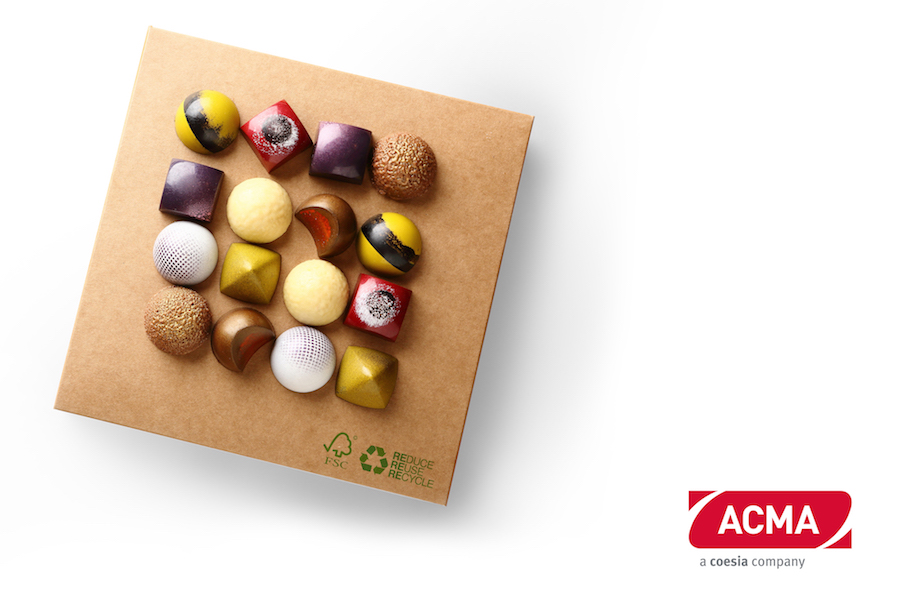How can packaging support Confectionery manufacturers in their journey towards sustainability?
Contents of the article
1. THE ROLE OF PACKAGING IN CONFECTIONERY’S SUSTAINABILITY EVOLUTION
2. HOW TO BE SUSTAINABLE AND SATISFY CONSUMERS?
3. MARKET DRIVEN SUSTAINABILITY: FOR BRANDS, FOR PEOPLE AND FOR THE PLANET
4. SUSTAINABILITY CHALLENGE: WIN WITH INNOVATION, GROW WITH A STRONGER REPUTATION
The world has changed. The environmental pollution due to plastic and derivatives is now an important theme for governments, media and consumers all around the world.
As a result, major players in the Food industry have improved their sustainability policies, focusing on programs to reduce the environmental impact of their business. Confectionery confirms as one of the most active segments in this sense, with brand owners and manufacturers taking active steps to meet sustainability goals. In addition to energy efficiency strategies related to industrial process, packaging proves to be one of the most relevant items in their sustainability reports.
For instance, over 150 companies in the last 20 years have adhered to the American Business Act on Climate Pledge, defining sustainability objectives to be fulfilled within 2015. Among them there are big multinational corporations active in the Confectionery segment, such as Hershey, Mondelēz, Nestlé and many others.
THE ROLE OF PACKAGING IN CONFECTIONERY’S SUSTAINABILITY EVOLUTION
The disposal of packaging in the FMCG’s sector carries a lot of weight on global pollution. According to the latest Euromonitor’ estimate indeed, the 63% of packaging is actually made of plastic.
The reduction of those harmful materials that arrive to final consumers has to be a gradual process, both for brands owners and manufacturers, a process that starts from specific products’ lines and then involves the entire commercial offer. This step-by-step sustainable evolution allows, on the one hand, not to lose usual consumers, on the other to attract those customers that are more interested in products with a low environmental impact.
HOW TO BE SUSTAINABLE AND SATISFY CONSUMERS?
Environmental sustainability doesn’t mean economical unsustainability.
It happens quite often that the use of a premium packaging format, in line with sustainability principles, goes hand in hand with an increased perception of the product’s value – also driven by the packaging – and thus a premium price. In fact, besides being a key aspect to consider for sustainability, packaging is also a powerful marketing tool that increases the product’s value.
According to the research “Packaging and purchase decisions: An exploratory study on the impact of involvement level and time pressure”, carried out by Silayoi and Speece, the opinion on a product’s features is indeed influenced by the characteristics of its packaging. If the packaging is a high quality one, consumers are prone to thinking the product has the same quality features.
This is a very important aspect to remember when dealing with Fast Moving Consumer Goods’ packaging, since these products are chosen without an extensive research for information before in-store purchase, since consumers tend to perceive them as low-risk. However, customers recognize their environmental impact: the choice of eco-friendly products is increasing, even if it means paying a surcharge.
For instance, according to Mintel’s “Rethink Plastic” research, consumers are more and more eco-aware, not only in Western Europe and North America but also in developing countries: 41% of Chinese consumers that live in urban centers claims that environmentally friendly packaging is a fundamental factor for an ethical brand. As reported by “Euromonitor International’s Lifestyles Survey”, the number of global consumers willing to pay more for eco-friendly products in eco-friendly packaging is now growing: more than the 18% of the interviewees, is ready to spend more for packaged food in recyclable packaging, while 12% of them would pay more for eco-friendly packaging.
Creating sustainable packaging thus doesn’t mean giving up on materials that prospects and customers might perceive as premium, if they are compatible with sustainability – such as glass or high-quality cardboard. On the contrary, the use of premium materials works as an additional purchasing driver for environmental conscious consumers. When customers perceive food confectionary packaging as high-quality ones, their purchase disposition towards more expensive products increases of 50%. [1]
MARKET DRIVEN SUSTAINABILITY: FOR BRANDS, FOR PEOPLE AND FOR THE PLANET
Two most effective ways to satisfy both sustainability and marketing have been identified. They can walk along together: from one side, the redesign of packaging for increased compactness limits the production of waste. On the other side, packaging environmental footprint can be decreased through the use of innovative eco-friendly materials.
It is worth remembering that, designing a sustainable packaging with new materials doesn’t mean damaging the product’s protection, which must always come first. Customers know it well: according to the Interpack’s research previously mentioned [2], 80% of them claims that the protection provided by packaging is more important than its sustainability.
Sustainable redesign is more about the satisfaction of two equally important human needs of safety and sustainability. As well stated by the World Business Council for Sustainable Development:
“Eco-efficiency is achieved by the delivery of competitively-priced goods and services that satisfy human needs and bring quality of life, while progressively reducing ecological impacts and resource intensity throughout the life-cycle to a level at least in line with the earth’s estimated carrying capacity.”
To summarize, an eco-efficient design able to create packaging characterized by the highest value for people at the minimum impact on the planet.
Among the interesting materials for sustainable packaging, we can include aluminium, characterized by an extremely high recyclability; it is mainly used in primary packaging, thanks to its resistance, UV-rays, bacteria and odours isolation. In the food confectionery, wrapping machine knead it with absolute precision. Cardboard and paperboard are by far the closest materials to eco-efficiency. Since they are both paper materials, they have similar features. The recycling process of paperboard is more complicated because it requires additional steps before going into a recycling machine, while cardboard packaging is much easier to recycle: no sorting is required unless it is contaminated with food remnants.
Cardboard indeed, is an eco-friendly, easily recyclable material that allows to increase consumers’ positive perception thanks to its high customization. Even in its recycled version, cardboard is one of the favourite materials, especially by those brands that do online business, which use it for secondary packaging, with procurement costs that are not much higher than plastic ones.
SUSTAINABILITY CHALLENGE: WIN WITH INNOVATION, GROW WITH A STRONGER REPUTATION
Winning the sustainability challenge to answer global trends is possible.
By following – and in some cases anticipating - market trends, brands owners and manufacturers have the chance to replace plastic packaging with cardboard and paper ones, encountering the favour of an increasing number of consumers. In order to show the new positioning in terms of high-quality packaging, new design and innovative materials, a brand needs the support of a partner able to knead and enhance them at the highest levels of precision.
ACMA, in collaboration with COESIA’s packaging innovation center and related research labs, can reveal in advance market trends and develop customized solutions for food confectionery, guaranteeing top quality and sustainable packaging: from recycled cardboard packaging to wrap with the least use of plastic, designed to reduce waste and optimize the energy consumption of the industrial process.
To broaden your brand outlooks and create the feasibility plan of your sustainability challenge, contact our specialists for a dedicated consultation.
The quality of your packaging deserves careful attention.
CONTACT OUR SPECIALISTS



